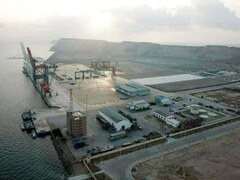The government would have us believe that there needs to be a cut-off point beyond which the IMF (International Monetary Fund) cannot change the goalpost, especially after its own conditions have been changed and met several times, to conclude the 9th review of the EFF (Extended Fund Facility).
For, even after reluctantly enforcing new taxes, letting the rupee float, raising the interest rate to a historic 21 percent, and hiking inflationary energy tariffs – and paying a very heavy political and economic cost for it – the government must now wait for the Fund to approve the next budget as well before the $1.1 billion tranche, due since November, can bolster national reserves. It’s also been announced by ratings agency Fitch, amidst all this uncertainty, that Pakistan faces a total of $3.7 billion of debt payments starting this month, so you can expect financial markets to rattle all the way till IMF’s executive board feels the upcoming budget is good enough to green-light the 9th review.
If that were not bad enough, there’s also chatter that the Fund might want yet more hawkish posturing from the State Bank of Pakistan (SBP) as food prices pushed inflation to a record 36.4 percent in April. Such thinking borders on the absurd for at least two reasons. One, why lobby for the central bank’s sovereignty and free it from the clutches of the finance ministry, and rightly so, and then compromise that independence by interfering in its interest rate regime? And two, why reinforce failure by raising rates again even though it has become abundantly clear that this wave of inflation is from the supply side, not because of roaring aggregate demand, and all tighter rates have done is squeeze production and growth while prices have continued to rise? What if SBP does not feel the need to tighten anymore for now, but the IMF does?
The same is true for much of IMF’s pro-cyclical, pro-austerity structural adjustment doctrine that does nothing to manage growth or control prices and invariably triggers and entrenches stagflation.
We are locked into the bailout program and there’s no way out till it’s done, of course, but if even this outing with the lender does not force a drastic policy rethink in Islamabad, then even these bailout dollars will not help the country beyond a couple of fiscal years.
Let’s not forget that this is an election year, when sitting governments tend to go overboard with people-pleasing measures, so some additional friction ought to be expected as well. Hopefully, it will be an IMF budget at the end of the day.
S. Jafry (Lahore)
Copyright Business Recorder, 2023






















Comments
Comments are closed.